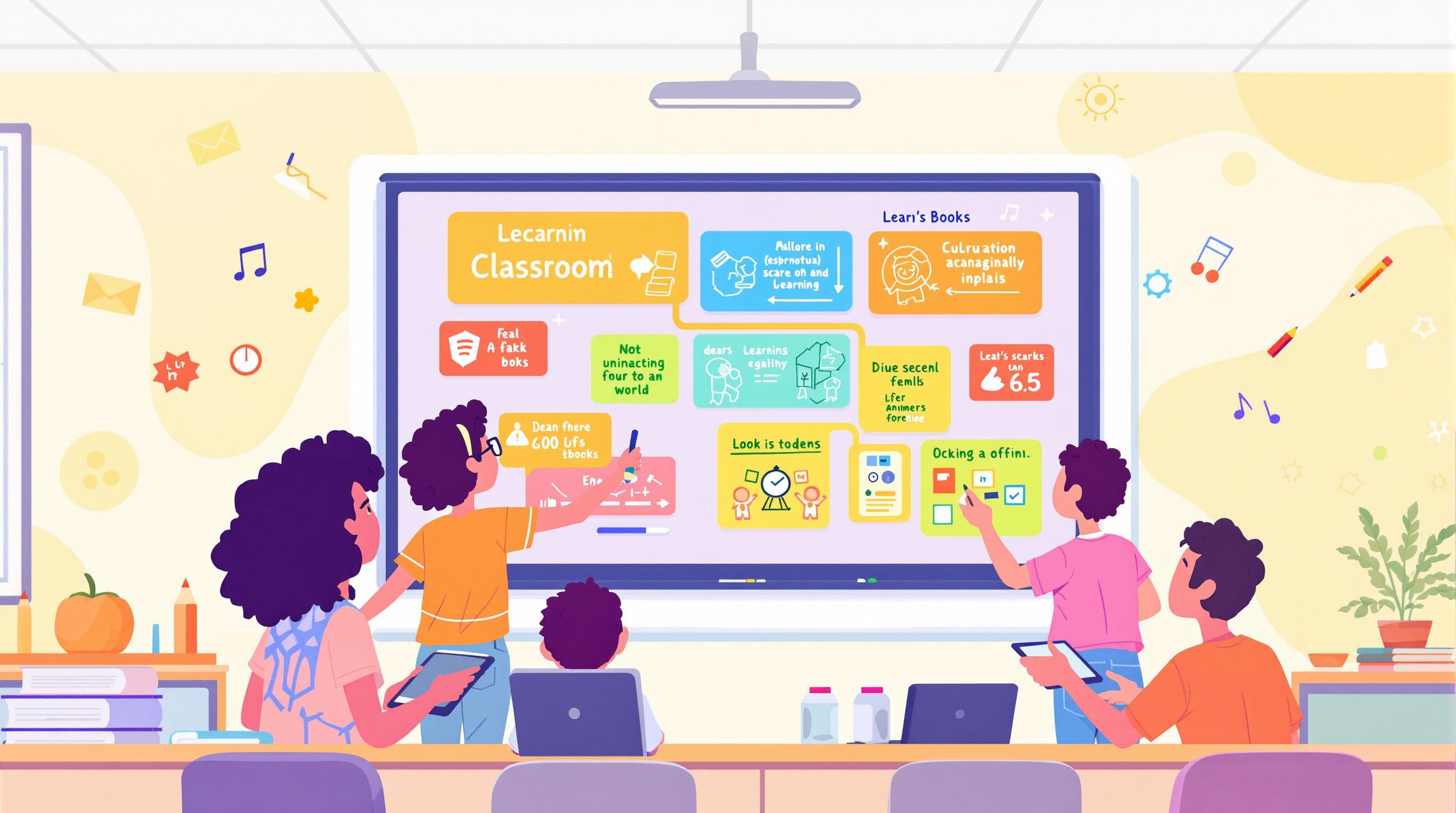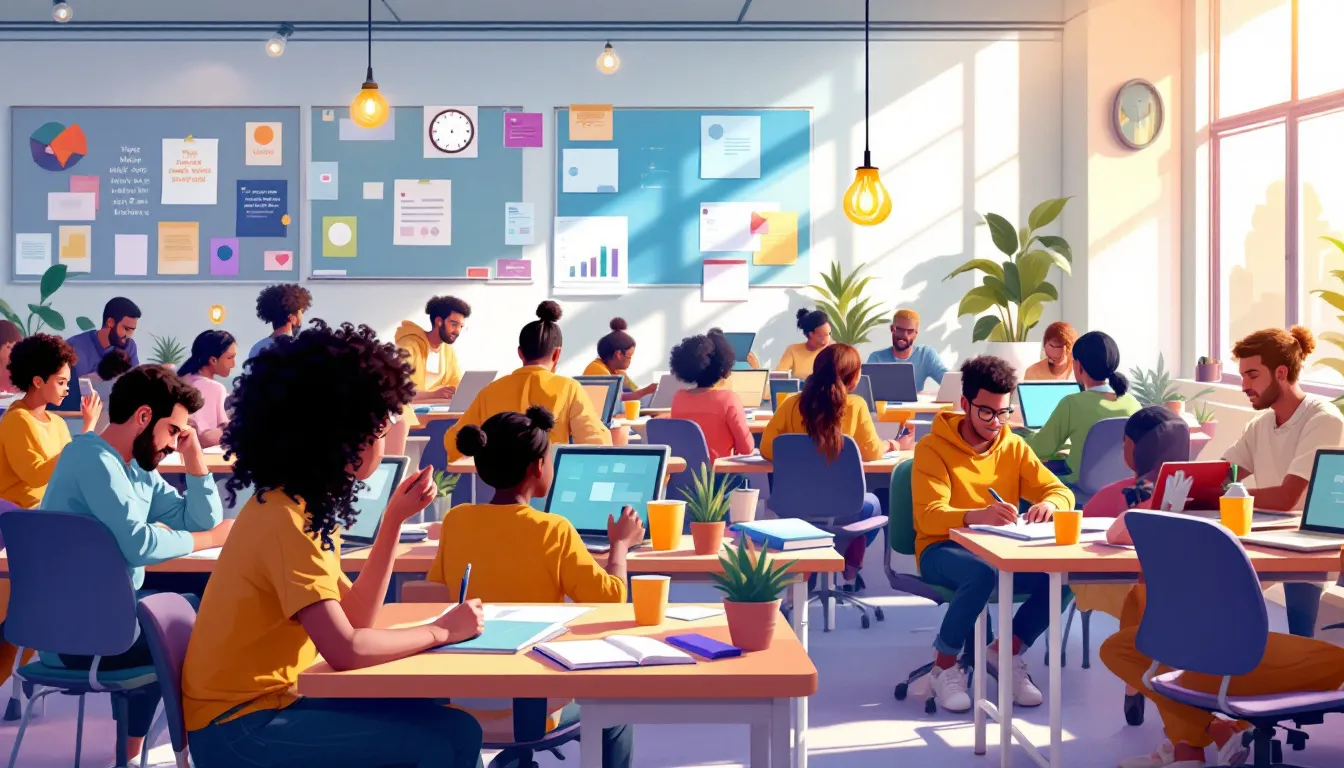Most will agree that science education often lacks sufficient hands-on experimentation.
However, research shows incorporating more hands-on science activities can lead to critical benefits for students across all age groups.
In this article, we'll explore why hands-on science is so impactful, provide examples of effective hands-on lessons, review supporting research, and discuss how to build a culture focused on hands-on science learning.
Unveiling the Impact of Hands-On Minds-On Learning
Hands-on science experiments provide an impactful way for elementary school students to engage in active minds-on learning. When students participate in hands-on activities like science experiments, they are more likely to retain information and develop critical thinking skills. Here are some of the key benefits of incorporating hands-on science experiments into elementary science curriculums:
Enhanced Student Engagement
Hands-on experiments captivate students' curiosity and interest in science topics. Instead of passively listening to lectures, active participation allows students to engage their senses and energy into the learning process. This leads to better focus, attention, and motivation to learn.
Development of Scientific Skills
Conducting science experiments allows students to develop first-hand experience with important science practices like observing, measuring, experimenting, and analyzing results. Over time, repeated hands-on experiences build students' confidence and competency with the scientific method.
Improved Retention
Active participation through hands-on activities produces better memory encoding and content retention compared to traditional teaching methods. Physical immersion within an experiment creates vivid memories and a deeper understanding.
In summary, incorporating hands-on science experiments as a regular part of elementary science education nurtures students' innate curiosity while equipping them with essential skills for scientific discovery. The engaging nature of hands-on learning leads to better academic outcomes.
Why are hands-on activities important in science?
Hands-on activities are crucial for science education because they allow students to actively engage with scientific concepts instead of just passively reading about them. Here are some of the key benefits of incorporating hands-on science experiments in the classroom:
- Improves engagement and motivation: When students get to touch, feel, and manipulate materials to test a hypothesis, they typically find it more fun and motivating than traditional lecture-based learning. This boosts their interest and engagement with science.
- Enhances understanding: Hands-on activities provide an opportunity to experience scientific phenomena first-hand. This direct experience deepens students' understanding of concepts and the scientific method.
- Supports different learning styles: Hands-on learning accommodates visual, auditory, and kinesthetic learning styles. This differentiation is important for inclusiveness.
- Develops critical thinking skills: Designing experiments, making observations, analyzing data, and interpreting results all help strengthen students' critical thinking and problem-solving abilities.
- Makes science relevant: Conducting experiments with real-world applications makes science come alive while highlighting its relevance beyond the textbooks.
In summary, incorporating hands-on science activities sparks curiosity, drives engagement, and enables deeper learning. Even simple, cost-effective experiments can make a real difference.
Why is hands-on research important?
Hands-on research is crucial for developing critical thinking and problem-solving skills in students. When students have the opportunity to design and carry out experiments, they learn how to ask thoughtful questions, make observations, analyze data, and draw conclusions.
Here are some of the key benefits of incorporating hands-on science activities:
- Improves comprehension and retention of concepts
- Allows students to apply theoretical knowledge
- Develops skills like critical thinking and collaboration
- Boosts enthusiasm and engagement with science
Additionally, hands-on activities provide meaningful practice for future careers in STEM fields. Whether students pursue science as a career or apply scientific reasoning in their daily lives, hands-on experience gives them valuable real-world skills.
Overall, active participation is vital for gaining a deeper understanding of science. Hands-on experiments make abstract ideas concrete and allow students to gain firsthand experience with scientific phenomena.
What are the benefits of hands-on labs?
Hands-on science experiments provide numerous benefits for students. Here are some of the key advantages:
Enhanced Engagement and Interest
Participating in hands-on activities sparks curiosity and engagement among students. They get to interact directly with materials and actively build knowledge through first-hand experience. This leads to greater enthusiasm for learning science.
Development of Skills
Hands-on labs allow students to develop critical thinking abilities, problem-solving skills, and scientific observation capabilities. They learn how to ask research questions, form hypotheses, collect data, draw conclusions, and communicate findings.
Deeper Understanding
Active participation in experiments leads to better conceptual understanding compared to traditional instruction alone. Students gain tangible insights into abstract concepts through hands-on investigation and inquiry. This cements their learning.
Preparation for Future
Experience with lab equipment and scientific methodology prepares students for more advanced work in the future. Hands-on labs get them ready for careers in STEM fields.
In summary, well-designed hands-on activities provide the perfect blend of minds-on and hands-on learning to boost student outcomes. They enable educators to engage multiple senses and learning styles to foster deeper, authentic understanding.
sbb-itb-bb2be89
Why are hands-on projects important?
Hands-on science projects allow students to actively engage with concepts they are learning in an immersive way. When students participate in experiments, they can see scientific principles applied in real life instead of just reading about them in a textbook. This type of active, inquiry-based learning facilitates deeper understanding and long-term retention of the material.
Here are some of the key benefits of incorporating hands-on science projects:
- Improves critical thinking skills - As students design experiments, they must think through variables, form hypotheses, troubleshoot issues, and draw conclusions. This process strengthens critical analysis abilities.
- Boosts student engagement and interest - Actively doing an experiment is inherently more engaging for students than passive learning. Hands-on activities make science come alive.
- Reinforces textbook concepts - Conducting experiments lets students witness the scientific theories they study in action. This cements a deeper, experiential grasp of key principles.
- Allows customized projects - Teachers can design hands-on activities tailored to curriculum standards across diverse science disciplines. Custom projects enable targeted, relevant learning.
- Promotes collaboration - Group experiments encourage teamwork, discussion, and peer learning among students. This cooperative work builds essential interpersonal skills.
In short, incorporating hands-on science encourages active inquiry, deeper engagement, and customized learning. These benefits lead to improved comprehension and skills that will serve students long-term across all academic subjects. Hands-on experimentation brings science to life!
Unlocking Potential: Why Science Experiments Are Important
Hands-on science experiments are a vital component of education that provide numerous benefits for students' development and future success. By actively engaging in the scientific process, children build critical thinking abilities, curiosity, and problem-solving skills that will serve them throughout their lives.
Sparks Curiosity and Engagement
Science experiments capture students' natural curiosity about the world around them. Instead of passively reading facts from a textbook, hands-on learning allows them to make observations, ask questions, and interact with concepts firsthand. This leads to greater enthusiasm and engagement with science itself.
For example, rather than just reading about chemical reactions, mixing household items to create bubbling lava lamps allows students to see scientific principles in action. This engages multiple senses and showcases science as exciting.
Fosters Critical Thinking and Problem-Solving
Conducting hands-on experiments requires much more than just following step-by-step instructions. Students must harness skills like observing, predicting outcomes, analyzing results, and interpreting what the findings mean.
In one experiment, children may be asked to create a lever system capable of lifting a heavy book. They must brainstorm ideas, test different materials and designs, evaluate what works, troubleshoot issues, and continually refine their methods. This process mirrors real-world engineering and fosters persistence through failure.
Makes Science Tangible and Accessible
For many students, science can feel abstract or irrelevant to their lives. However, actively doing experiments makes conceptual ideas more concrete. Kids can see firsthand how physics governs the trajectory of a ball, how chemical reactions power real-world technologies, and how biological systems connect living things.
Hands-on learning also makes science more inclusive and accessible for different learning styles. While some students excel at textbook concepts, others thrive when given the chance to manipulate materials themselves.
In the end, science experiments make learning interactive, engaging, and tangible - unlocking curiosity and potential in us all. The hands-on scientific process nurtures the thinkers and innovators of tomorrow.
Building Foundations: Hands-On Science Activities for Elementary Students
Hands-on science activities play a pivotal role in building strong foundations for learning in elementary school students. When students actively participate in conducting experiments, they gain first-hand exposure to core scientific concepts. Beyond memorizing facts or terminology, hands-on learning allows children to experience the excitement of discovering how the world works. As teachers design engaging science lessons, three best practices rise to the top in terms of laying the groundwork for impactful learning.
Focus on the Process, Not Just Results
Rather than fixating on whether an experiment “works” as intended, educators should place more emphasis on the methodical process students follow from start to finish. For example, when doing a simple experiment to create an electromagnet using wire, batteries, and nails, resist the urge to just show students the end result. Instead, walk them through concepts like magnetic fields step-by-step, allowing them to make predictions, test variables, record observations, and analyze results. This focus on the scientific method over outcomes builds critical thinking abilities and an inquisitive mindset that sticks with students for life.
Encourage Collaboration and Teamwork
Group experiments enable valuable peer learning as students teach their classmates through hands-on discovery. Younger students often find it less intimidating to discuss findings and share ideas within a small team rather than in front of the whole class. Group experiments also build teamwork as children learn to take turns, divide tasks, and communicate results. Teachers may allow groups to choose their own research questions or assign specific variables to test across teams and then have students reconvene to teach each other what they learned. This collaborative structure mirrors how real scientists operate in the field.
Integrate Hands-On Activities with Daily Life
Whenever possible, use familiar materials and tie scientific principles to students’ existing hobbies or interests. For example, a hands-on lesson about friction could integrate toy cars students already play with for ramp experiments. Or an electromagnet lesson might involve testing the strength of magnets to pick up coins, keys, or other everyday metal objects. This boosts relevance and engagement significantly. Children intrinsically want to know more about the world directly around them. So tapping into their innate curiosity about everyday phenomena through hands-on science makes material stick.
In summary, hands-on experimentation equips students with scientific thinking abilities, collaboration skills, and deeper connections between academic concepts and real life. While proper guidance is essential, allowing children to actively participate in the discovery process cements foundational learning in remarkable ways. When science leaps off the textbook pages, the joy of exploration and aha moments leave lasting impressions.
Evidence-Based Insights: Research About Hands-On Activities
Hands-on science activities have been shown to provide significant benefits for student learning and engagement. Multiple studies have demonstrated that active, inquiry-based approaches lead to improved conceptual understanding and critical thinking skills compared to more passive teaching techniques.
Addressing Classroom Challenges
Conducting hands-on science experiments does come with logistical challenges. Here are some solutions:
- Limited materials: Focus experiments on using everyday household items that are easy to obtain. Also emphasize creative re-purposing of materials.
- Messy cleanup: Plan for spills and mess by conducting experiments in easy to clean spaces. Have students wear aprons/smocks and schedule extra cleanup time.
- Safety: Review safety rules before experiments. Supervise closely and model safe practices. Have safety equipment on hand.
- Cost: Seek grants, parent/community donations and organize fundraisers to help purchase materials. Partner with local businesses for donations.
- Time-constraints: Structure hands-on sessions so key learning objectives are met efficiently. Allow flexibility for experiments to be completed across multiple sessions if needed.
Maximizing Limited Resources
Here are tips for running engaging hands-on science activities with limited resources:
- Emphasize the design process rather than expensive equipment. Foster creativity and innovation through re-purposing household items.
- Take students outside to use natural materials like soil, leaves, sticks. This highlights real-world application while minimizing costs.
- Pool resources with other teachers to share materials and ideas. Also coordinate sourcing donations.
- Use apps and digital tools for data collection/analysis when physical equipment is lacking. Some options offer free educational subscriptions.
- When supplies are simply unobtainable, use simulations and videos. Debrief afterwards to meet key learning goals through reflection and discussion.
Conclusion: Embracing the Hands-On Experiment Culture in Education
Hands-on science experiments provide invaluable learning opportunities for elementary students. Actively engaging with materials and concepts through experiments facilitates deeper understanding and long-term retention of key scientific principles.
As educators, we must foster a culture of active exploration, inquiry, and discovery in our classrooms. Simple, cost-effective experiments using everyday materials allow students to learn by doing. Guiding them through the full scientific method - asking questions, forming hypotheses, testing through hands-on trials, gathering data, and drawing conclusions - builds critical thinking abilities that will serve them throughout their lives.
Embracing more hands-on activities provides students the freedom to explore real-world phenomena, satiating their natural curiosity. These memorable experiences spark passion and reinforce that science learning can be joyful.
Equipping the next generation with strong scientific foundations ensures we develop analytical citizens who enthusiastically pursue knowledge and solutions to global challenges. By incorporating more hands-on experiments into elementary science curriculums, we take an important step towards raising engaged, innovative students.


